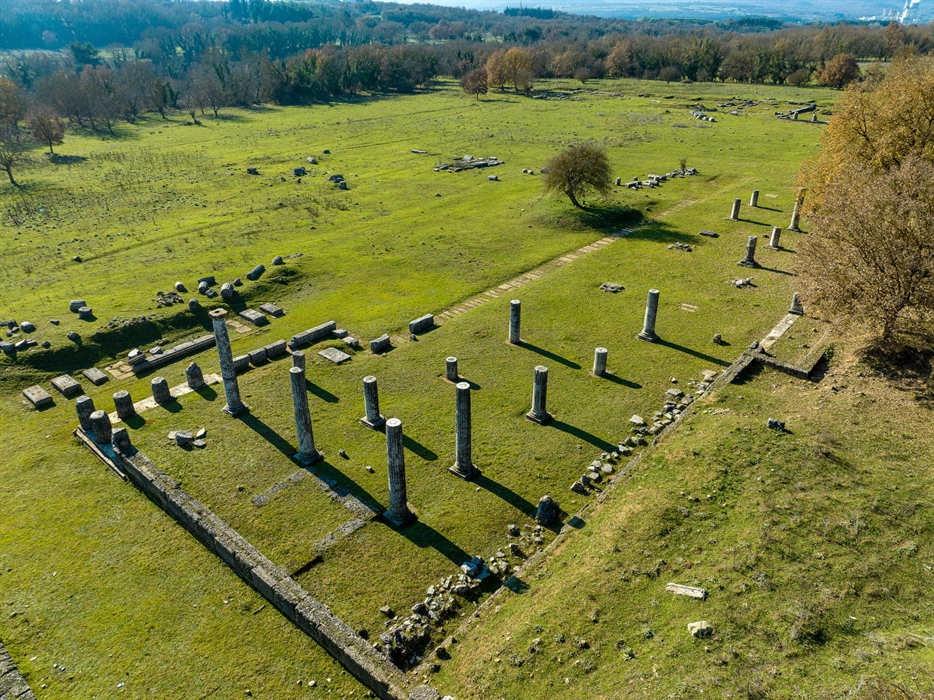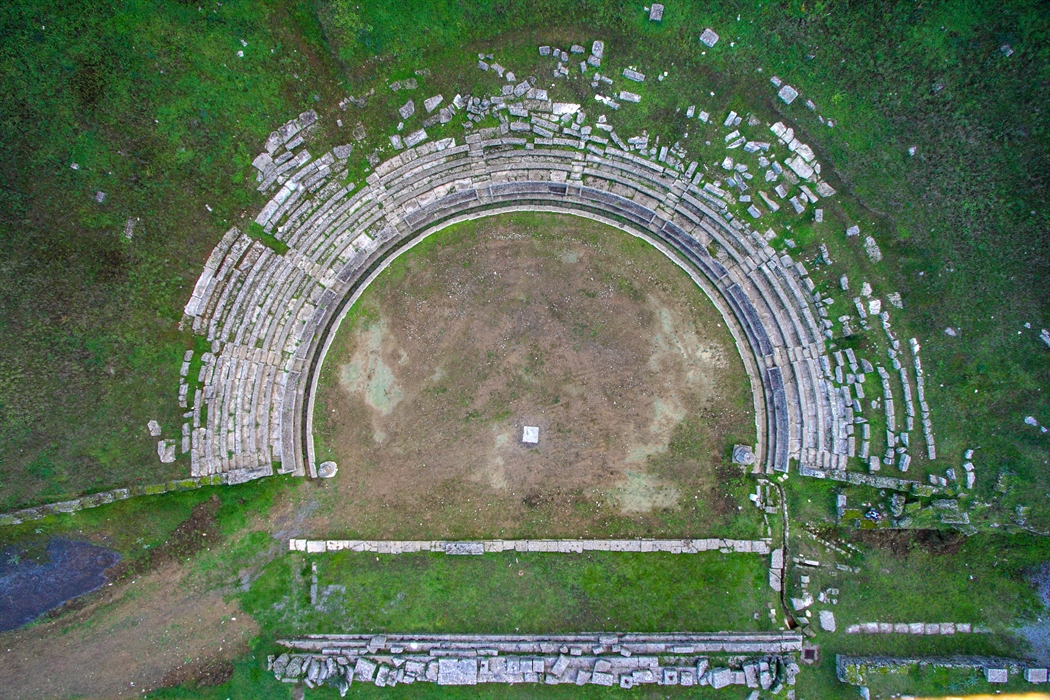The ancient Theatre of Megalopolis
Megalopolis means “Great City”. This ancient major settlement had also a great theatre. In fact, it was one of the biggest in the ancient Greek world which seated around 20,000 people!
Megalopolis means “Great City” in Greek, and ancient Megalopolis was indeed a major city. It was founded in 371 BC, as a kind of “new town”, and people from surrounding settlements such as Gortys moved here. The city had a relatively short period of glory lasting only about 200 years, and by Roman times it had fallen into a decline. By the Middle Ages everyone had left again, and in a reversal of fate, gone to live in the neighbouring settlements.
It is only fitting that the “Great City” had a great theatre, in fact one of the biggest theatres in the ancient Greek world which seated around 20,000 people! In fact, the whole site was an important spiritual and artistic centre for the people from Megalopolis and from all over Arcadia. Part of the theatre has been excavated, along with the Thersileian parliament, the Agora, the Sanctuaries and the Philippian Stoa which are just on the other side of the river Alfeios which flows through the site. In its heyday the theatre had three tiers with a total of 17 rows of seating on the top tier and 20 rows on the bottom two, an impressive architectural feat considering it was built well over 2000 years ago!
The site is three kilometres outside today’s Megalopolis, just off the road to Karytania. It was first excavated between 1890-1891 by the British School of Archaeology in Athens. Nowadays, works on the site and an archaeological restoration study are being carried out by the Ephorate of Antiquities of Arcadia as part of an EU NSRF programme.
Location
Find the destination on the interactive map below.
Categories
Weather
Σχετικό περιεχόμενο χρηστών (UGC)
Ενημερωθείτε για ενδιαφέροντα θέματα γύρω από τον προορισμό μέσα από το περιεχόμενο των χρηστών μας
Discover 7 hidden gems of the Peloponnese
Many of you may have already visited some of the most renowned attractions…
TOP 10 archaeological museums in the Peloponnese
Olympia, Mycenae, Epidaurus, Diros Cave, Ancient Corinth, Messene and…
TOP 10 Castles in the Peloponnese
Castles galore! Mystras, Monemvasia, Palamidi, Methoni, Koroni,…
Newsletters
- About us
- FAQ's
- Map
- Tourism information centers
- Disclaimer
- Sitemap
- Our brand
- Media roum
- Adding your bussiness
- Corporate
- MICE

Peloponnese. Greece beyond the obvious





Design and creation from Cosmote
Marinas and Moorings
Diving centers
Get inspired
- Media gallery
- Blog
- The Peloponnese in the media
- Your feedback
- Users' general content
- Users' local products
- Users' events content
- Ask a local
More
- Accommodation
- Travel agencies
- Restaurants
- Services
- Destinations Map
- Weather
- Public transport
- Events
- Frequently asked questions
- Useful phones
- B2B
- Destination Data
- Contact


